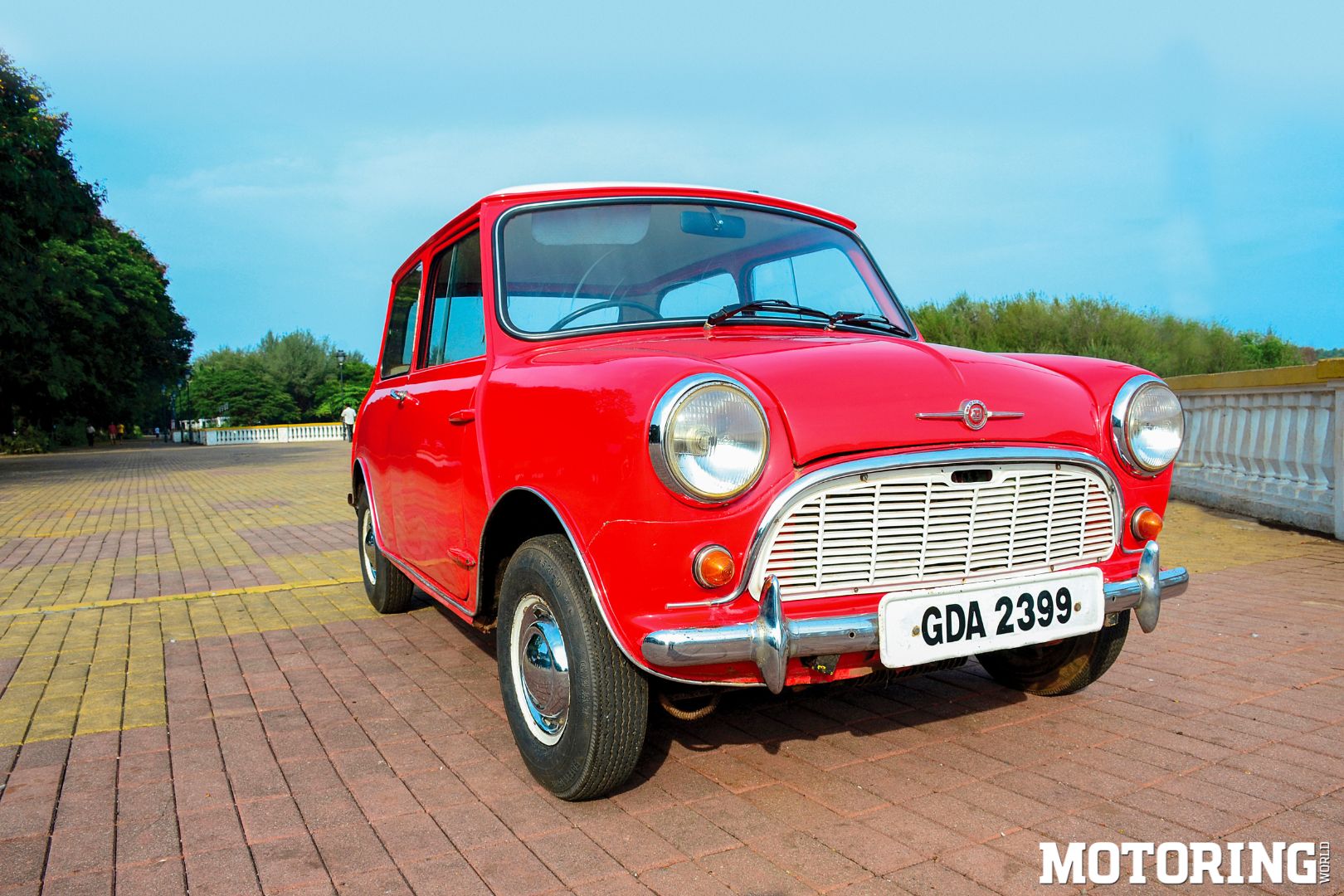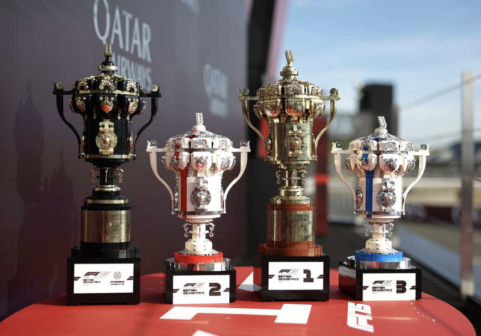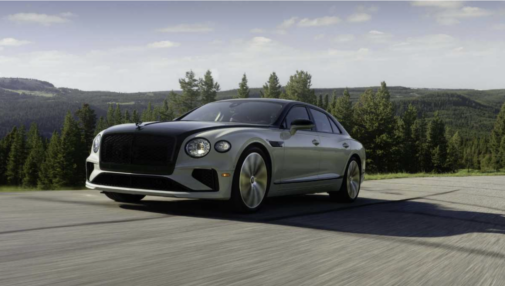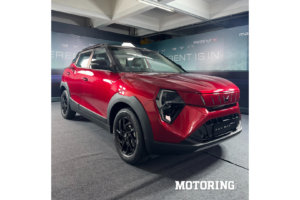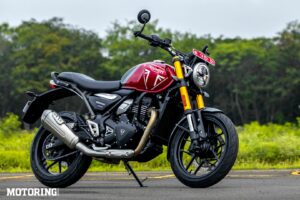Milind Angle leaned back into the sofa in his tidy, old-world living room — complete with porcelain vases, display cases and a stately clock — and adjusted the stems of his glasses. His kindly face softened further, and his eyes took on a noticeable glow as he said ‘I am proud that I have kept my promise.’ He was referring to his beloved Morris Mini which, as he spoke, was being given some extra-TLC at a workshop.

‘Several times in the 1990s, when absolutely no parts were available, my mother asked me if I would ever sell the car, and each time I said “Mummy, I will not.” I have kept it on the road to this day, despite many difficulties with its maintenance.’ During his 78 years on this planet, Angle has — unsurprisingly— seen, heard and experienced a very wide spectrum of things. He grew up in Portuguese-ruled Goa, a time that he says was ‘different’. The Indian government had sealed off every border with Goa save for the one with Karwar, in southern Goa; this meant that whenever Angle needed to go to Bombay, he would have to first travel south and then north again, a journey of over 30 hours involving multiple buses and corrupt border officials, among other things. Within Goa, life was peaceful, orderly and idyllic under the Portuguese, he says; he has nothing but fond memories of that period.
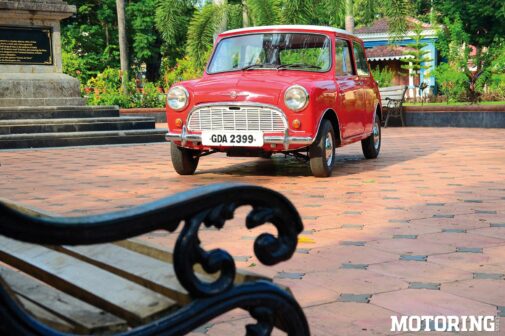
‘Now, I sometimes can’t recognise Goa.’ He has a treasure trove of memories to share, many of which would greatly annoy today’s self-proclaimed ‘nationalists’. Another story, another day, however; for now, we’re focussing on his Mini. ‘In those days, being Portuguese territory, Goa had access to several foreign automotive brands, whereas imports had been banned in India. The dealer for Morris, Volkswagen, Bedford, Wolseley and other brands happened to be my maternal uncle, and he decided to gift the Mini to my mother.’ It was a very significant Mini, too — the very first one to land on Indian shores (we’ll make some geopolitical allowances here), which is the reason it’s of historical significance — and in this special issue. ‘The Mini was officially announced to the public in the UK on 26th August 1959, and this car arrived here in December of 1959; it has been in the family ever since’ says Angle.
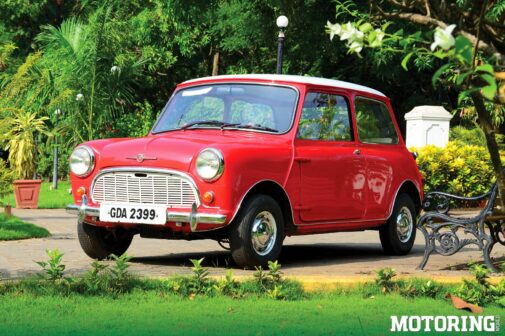
It’s not often that we feature cars in this magazine without actually driving them, but special occasions call for special measures. Angle’s Mini is undergoing a thorough restoration, one which was meant to have been completed by now. ‘You know how difficult and complicated restoring an antique car can be. Parts take time to source, and since most of them come from abroad, you can’t get them immediately. Some parts have to be adapted or machined, which is also tricky. Everything usually takes at least twice as long as you may have anticipated’ says Angle, with a slightly rueful smile. I consider this a damn shame; to have been able to drive a car as effervescent as the original Mini, and the very first one to arrive here to boot — now that would have been one for the bucket list. Still, as I was about to discover, there was satisfaction of a different sort in just spending time with Angle and listening to him hold forth about the Mini.
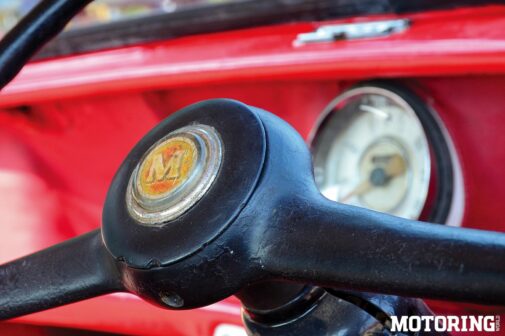
But first, some history. The Morris Mini needs no introduction, really. It’s one of the most iconic cars of all time — right up there with the Model T and the Beetle — and even though it’s no longer as ‘mini’ as it used to be, it remains a hot favourite under BMW ownership. Its origins were (like with many other cars) based on adversity, in this case the acute fuel shortage caused by the Suez Crisis of 1956; petrol had to be rationed in the UK, leading to sales of large cars dropping, and the famous bubble’ cars from Germany began to become popular there. This didn’t go down well with Leonard Lord, the famously cranky head of the British Motor Corporation — the parent company of Morris Motors and Austin Motor Company — who hated the things (you will have read about Lord in our story about the Austin A40 Sport).
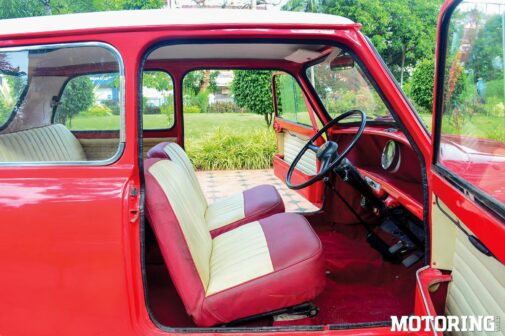
Lord wanted to build a small car that was ‘propah’ British, and he assigned the task to the legendary Alec Issigonis. The brief was simple: the car had to use an existing engine, it had to be a box that was no bigger than 10x4x4 feet and 6 feet of its length had to be dedicated to room for passengers. The engine selected was a 4-cylinder, water-cooled BMC A-Series unit, but it was mounted transversely in order to save on space, with the radiator fitted on the left rather than at the front. Every single element of the car was designed to maximise both passenger and storage space.
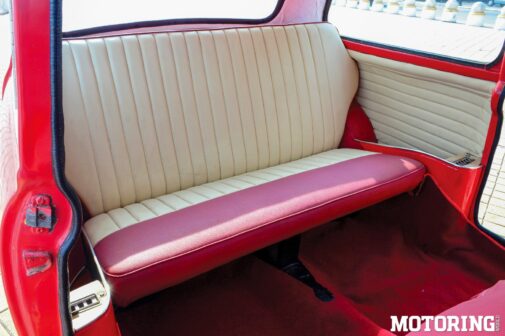
There were bins on the doors that Issigonis said were designed to carry a bottle of Vermouth and two bottles of Gordon’s Gin (to make his favourite cocktail, a martini). Indeed, there were bins everywhere, and under-seat storage was available too. In early models, the boot lid had hinges at the bottom, so you could stuff some more luggage in it and drive with the boot open; safety norms were a twinkle in nobody’s eye, at the time. Other technical challenges were considered and overcome. Its conical springs were made of rubber, which ensured several things — virtually no maintenance, space saving, a very progressive damping action and the ability to handle a massive range of weight (around 600 kg unladen to around 1000 kg fully loaded). Their rigidity, combined with the placement of the wheels at the four corners, gave the Mini its instantly famous go-kart handling; the wheels themselves were only 10 inches in size.
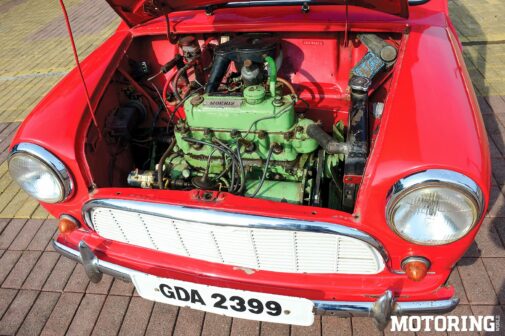
The engine was originally a 948cc unit making around 37 bhp, but this was deemed excessive for the car’s needs, so displacement came down to 848cc, with 33 bhp; the car could still hit a lively 120 kph, though. Various iterations of the Mini were of course made through the decades (including the Countryman ‘Woodie’, one of which Angle also owns — another day, another story), but the car you see here is the OG.
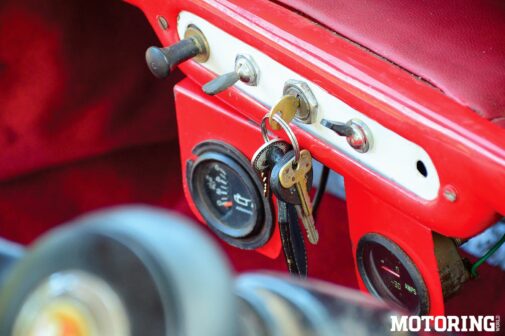
‘You have to be a little mad to do what Milind is doing.’ Oliver Coutinho owns Service Inn, a well-known workshop in Madgaon, Goa, specialising in painting, bodywork and restoration, and he clearly has a jocular relationship with Angle, because Angle agrees (especially since this is the car’s second full restoration). Both have a bit of a laugh, before Coutinho says ‘I don’t mind, you know. Milind is a perfectionist, and so am I; as much as he wants the Mini’s cosmetic restoration to be inch-perfect, I want to make sure that he gets what he wants.’ Coutinho has years of experience in restoring cars to like-new condition; he has a terrific tale about his restoration of the official car of the governor of Goa — a gigantic Cadillac limousine — but again, another story/another day.
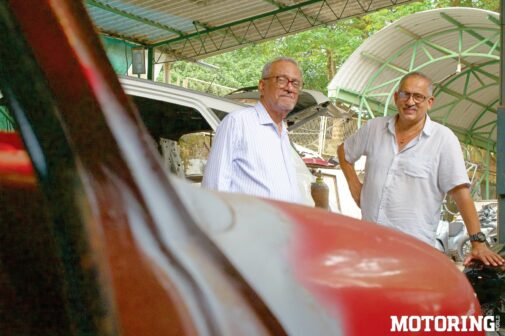
For the Mini, he personally coordinates with Angle, who regularly makes the drive from Panjim to Madgaon to keep an eye on proceedings. ‘As I mentioned, it’s not the easiest thing to procure parts for the car; most of them I have to import from abroad, through contacts in the official Mini Club in the UK. At least import is allowed now, despite the red tape one has to deal with; earlier, it was either banned or severely restricted in terms of the rupee value that you were allowed’ says Angle. ‘At that time, I had to really struggle to source parts, and I was lucky to have contacts in various companies that helped me do so.’ You can only admire his dedication to the task at hand, for which he displays the energy and enthusiasm of someone half his age.
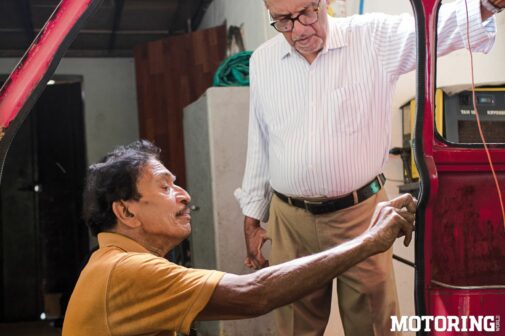
‘The body work is one thing, and I can blindly trust Oliver with the job. The engine, suspension and other mechanicals are quite another; I have a mechanic in Panjim who is enthusiastic, but I need to sit with him and guide him every step of the way’ he adds. Once the Mini is fully ready, Angle intends to use it as much as possible. In the old days, the car was used in the manner intended — packed to the gills with luggage and people. ‘Our family would drive to Belgaum regularly, with the car fully loaded and performing beautifully; it was also used as a daily runner for years. However, once it’s back with me, I can’t really use it every day — there’s just too much traffic to deal with. I’ll definitely drive it on weekends, and until I’m physically able to.’
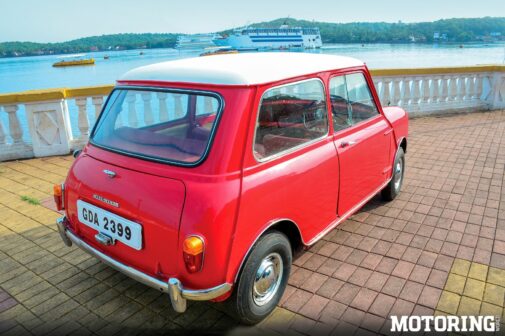
Over the course of several meetings with Angle, I discovered that we’re kindred spirits, in many ways. We both prefer old cars to new ones. We agree that Goa has been a mess for a while now, with no respite in sight. We have a number of vintage analogue cameras (I took some of his and had them thoroughly serviced). I’ve come to see him as a friend, therefore, and I’m following the restoration of his Mini almost as closely as he is. When it’s back with him in near-showroom shape, I hope to head out with him on a drive in Goa, with him perhaps playing the role of a guide and taking me to places he remembers from his youth. History connects all of us in a myriad of ways — and this Morris Mini can lay claim to being an important part of India’s automotive heritage.
Photos shot by Pablo Chaterji & Raj Tilak





